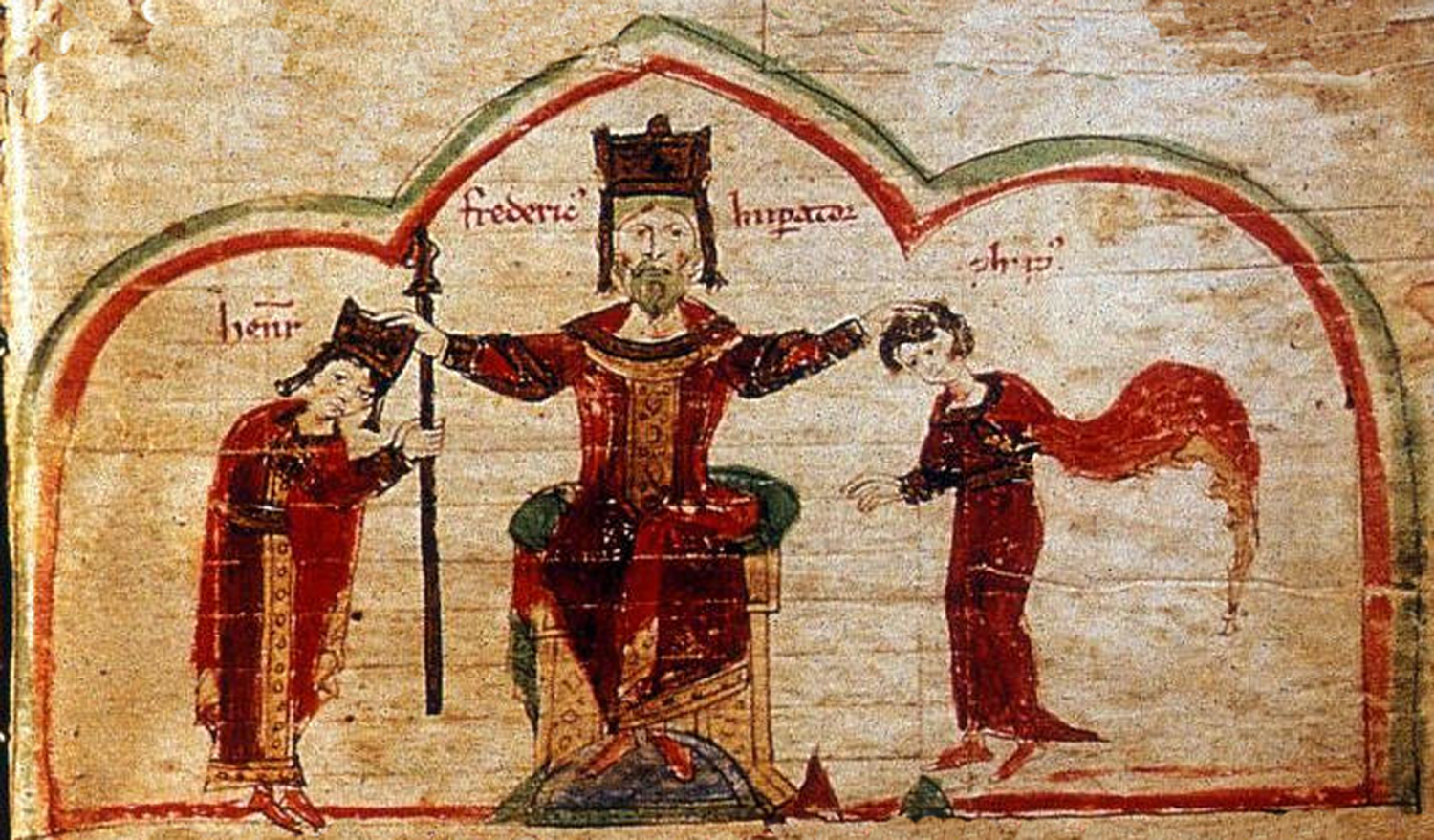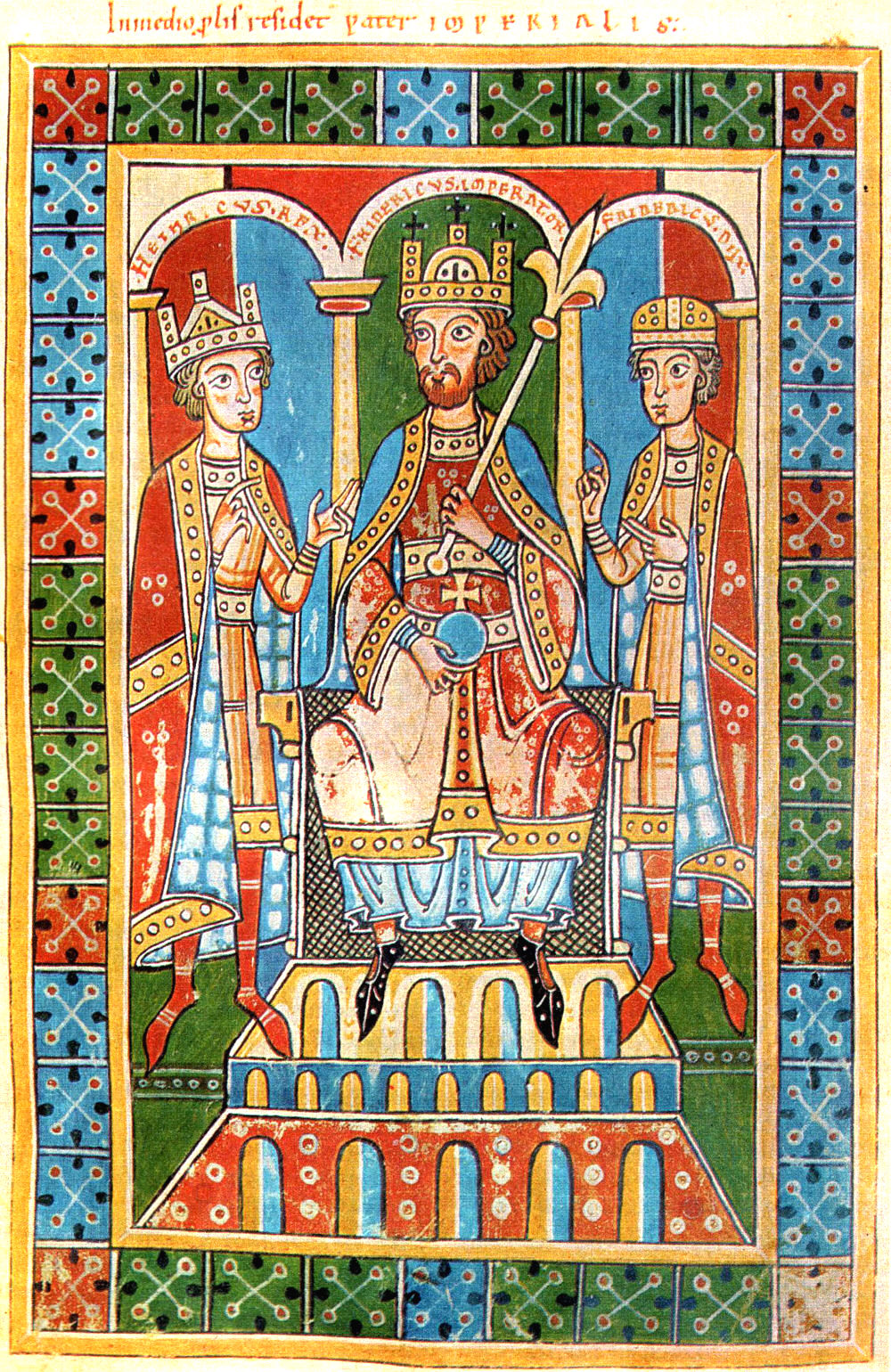|
Louis I Wittelsbach, Duke Of Bavaria
Louis I (german: Ludwig; 23 December 1173 – 15 September 1231), called the Kelheimer or of Kelheim, since he was born and died at Kelheim, was the Duke of Bavaria from 1183 and Count Palatine of the Rhine from 1214. He was a son of Otto I and his wife Agnes of Loon. Louis was married to Ludmilla, a daughter of Duke Frederick of Bohemia. Life Early years Soon after his father's death in 1183, Louis was appointed under the guardianship of his uncle Conrad of Wittelsbach and Emperor Frederick Barbarossa. His mother, Agnes, an energetic and enterprising leader, had taken over the regency of Bavaria in the meantime, securing her son's inheritance. Upon his coming-of-age, in 1189, at sixteen years old, at the beginning of his reign, he had already fallen in the midst of a conflict which triggered the nearly simultaneous extinction of the Burgrave of Regensburg and the Count of Sulzbach in the years 1188 and 1189. This allowed Barbarossa to expand his royal domains within the Emp ... [...More Info...] [...Related Items...] OR: [Wikipedia] [Google] [Baidu] |
House Of Wittelsbach
The House of Wittelsbach () is a German dynasty, with branches that have ruled over territories including Bavaria, the Palatinate, Holland and Zeeland, Sweden (with Finland), Denmark, Norway, Hungary (with Romania), Bohemia, the Electorate of Cologne and other prince-bishoprics, and Greece. Their ancestral lands of the Palatinate and Bavaria were Prince-electorates, and the family had three of its members elected emperors and kings of the Holy Roman Empire. They ruled over the Kingdom of Bavaria which was created in 1805 and continued to exist until 1918. The House of Windsor, the reigning royal house of the British monarchy, are descendants of Sophia of Hanover, a Wittelsbach Princess of the Palatinate by birth and Electress of Hanover by marriage, who had inherited the succession rights of the House of Stuart and passed them on to the House of Hanover. History When Otto I, Count of Scheyern, died in 1072, his third son Otto II, Count of Scheyern, acquired the castle of ... [...More Info...] [...Related Items...] OR: [Wikipedia] [Google] [Baidu] |
Laufen, Germany
Laufen (Central Bavarian: ''Laffa an da Soizach'') is a town in Berchtesgadener Land district in Bavaria at the Austria–Germany border. History It was first mentioned in a deed of 748. The rapids that gave the town the name (Laufen = rapid running waters) were also responsible for the town's wealth from the salt trade. Small boats that transported the extremely valuable cargo from the rapids north of Salzburg were reloaded at Laufen to larger boats by privilege of the Prince-Archbishop of Salzburg. When the independent principality was finally divided in 1816 between the Bavarian kingdom and the Habsburg Empire in the wake of the Napoleonic Wars, the town was split into a Bavarian part carrying the name of Laufen and into an Austrian town (the former Laufen suburbs on the right hand side of the river) by the name of Oberndorf. With the building of railways by the middle of the 19th century the transport of salt on the river Salzach came to an end, taking away the former source o ... [...More Info...] [...Related Items...] OR: [Wikipedia] [Google] [Baidu] |
Philip Of Swabia
Philip of Swabia (February/March 1177 – 21 June 1208) was a member of the House of Hohenstaufen and King of Germany from 1198 until his assassination. The death of his older brother Emperor Henry VI in 1197 meant that the Hohenstaufen rule (which reached as far as the Kingdom of Sicily) collapsed in imperial Italy and created a power vacuum to the north of the Alps. Reservations about the kingship of Henry VI's underage son, Frederick, led to two royal elections in 1198, which resulted in the German throne dispute: the two elected kings Philip of Swabia and the Welf Otto of Brunswick, claimed the throne for themselves. Both opponents tried in the following years through European and papal support, with the help of money and gifts, through demonstrative public appearances and rituals, to decide the conflict for oneself by raising ranks or by military and diplomatic measures. Philip was able to increasingly assert his kingship against Otto in the north part of the Alps. However, ... [...More Info...] [...Related Items...] OR: [Wikipedia] [Google] [Baidu] |
Hohenstaufen
The Hohenstaufen dynasty (, , ), also known as the Staufer, was a noble family of unclear origin that rose to rule the Duchy of Swabia from 1079, and to royal rule in the Holy Roman Empire during the Middle Ages from 1138 until 1254. The dynasty's most prominent rulers – Frederick I (1155), Henry VI (1191) and Frederick II (1220) – ascended the imperial throne and also reigned over Italy and Burgundy. The non-contemporary name of 'Hohenstaufen' is derived from the family's Hohenstaufen Castle on the Hohenstaufen mountain at the northern fringes of the Swabian Jura, near the town of Göppingen. Under Hohenstaufen rule, the Holy Roman Empire reached its greatest territorial extent from 1155 to 1268. Name The name Hohenstaufen was first used in the 14th century to distinguish the 'high' (''hohen'') conical hill named Staufen in the Swabian Jura (in the district of Göppingen) from the village of the same name in the valley below. The new name was only applied to the hill ... [...More Info...] [...Related Items...] OR: [Wikipedia] [Google] [Baidu] |
Sicily
(man) it, Siciliana (woman) , population_note = , population_blank1_title = , population_blank1 = , demographics_type1 = Ethnicity , demographics1_footnotes = , demographics1_title1 = Sicilian , demographics1_info1 = 98% , demographics1_title2 = , demographics1_info2 = , demographics1_title3 = , demographics1_info3 = , timezone1 = CET , utc_offset1 = +1 , timezone1_DST = CEST , utc_offset1_DST = +2 , postal_code_type = , postal_code = , area_code_type = ISO 3166 code , area_code = IT-82 , blank_name_sec1 = GDP (nominal) , blank_info_sec1 = €89.2 billion (2018) , blank1_name_sec1 = GDP per capita , blank1_info_sec1 ... [...More Info...] [...Related Items...] OR: [Wikipedia] [Google] [Baidu] |
Apulia
it, Pugliese , population_note = , population_blank1_title = , population_blank1 = , demographics_type1 = , demographics1_footnotes = , demographics1_title1 = , demographics1_info1 = , demographics1_title2 = , demographics1_info2 = , demographics1_title3 = , demographics1_info3 = , timezone1 = CET , utc_offset1 = +01:00 , timezone1_DST = CEST , utc_offset1_DST = +02:00 , postal_code_type = , postal_code = , area_code_type = ISO 3166 code , area_code = IT-75 , blank_name_sec1 = GDP (nominal) , blank_info_sec1 = €76.6 billion (2018) , blank1_name_sec1 = GDP per capita , blank1_info_sec1 = €19,000 (2018) , blank2_name_sec1 = HDI (2018) , blank2_info_sec1 = 0.845 · 18th of 21 , blank_name_sec2 = NUTS Region , blank_info_sec2 = ... [...More Info...] [...Related Items...] OR: [Wikipedia] [Google] [Baidu] |
Mainz
Mainz () is the capital and largest city of Rhineland-Palatinate, Germany. Mainz is on the left bank of the Rhine, opposite to the place that the Main (river), Main joins the Rhine. Downstream of the confluence, the Rhine flows to the north-west, with Mainz on the left bank, and Wiesbaden, the capital of the neighbouring state Hesse, on the right bank. Mainz is an independent city with a population of 218,578 (as of 2019) and forms part of the Frankfurt Rhine-Main, Frankfurt Rhine-Main Metropolitan Region. Mainz was founded by the Roman Empire, Romans in the 1st century BC as a military fortress on the northernmost frontier of the empire and provincial capital of Germania Superior. Mainz became an important city in the 8th century AD as part of the Holy Roman Empire, capital of the Electorate of Mainz and seat of the Elector of Mainz, Archbishop-Elector of Mainz, the Primate (bishop), Primate of Germany. Mainz is famous as the birthplace of Johannes Gutenberg, the inventor of ... [...More Info...] [...Related Items...] OR: [Wikipedia] [Google] [Baidu] |
Würzburg
Würzburg (; Main-Franconian: ) is a city in the region of Franconia in the north of the German state of Bavaria. Würzburg is the administrative seat of the ''Regierungsbezirk'' Lower Franconia. It spans the banks of the Main River. Würzburg is situated approximately east-southeast of Frankfurt am Main and approximately west-northwest of Nuremberg (). The population (as of 2019) is approximately 130,000 residents. The administration of the ''Landkreis Würzburg'' ( district of Würzburg) is also located in the town. The regional dialect is East Franconian. History Early and medieval history A Bronze Age (Urnfield culture) refuge castle, the Celtic Segodunum,Koch, John T. (2020)CELTO-GERMANIC Later Prehistory and Post-Proto-Indo-European vocabulary in the North and West p. 131 and later a Roman fort, stood on the hill known as the Leistenberg, the site of the present Fortress Marienberg. The former Celtic territory was settled by the Alamanni in the 4th or 5th century ... [...More Info...] [...Related Items...] OR: [Wikipedia] [Google] [Baidu] |
Emperor Henry VI
Henry VI (German: ''Heinrich VI.''; November 1165 – 28 September 1197), a member of the Hohenstaufen dynasty, was King of Germany (King of the Romans) from 1169 and Holy Roman Emperor from 1191 until his death. From 1194 he was also King of Sicily. Henry was the second son of Emperor Frederick Barbarossa and Beatrice I, Countess of Burgundy. Well educated in the Latin language, as well as Roman and canon law, Henry was also a patron of poets and a skilled poet himself. In 1186 he was married to Constance of Sicily, the posthumous daughter of the Norman king Roger II of Sicily. Henry, stuck in the Hohenstaufen conflict with the House of Welf until 1194, had to enforce the inheritance claims by his wife against her nephew Count Tancred of Lecce. Henry's attempt to conquer the Kingdom of Sicily failed at the siege of Naples in 1191 due to an epidemic, with Empress Constance captured. Based on an enormous ransom for the release and submission of King Richard I of England, he conqu ... [...More Info...] [...Related Items...] OR: [Wikipedia] [Google] [Baidu] |
Knighting
The accolade (also known as dubbing or adoubement) ( la, benedictio militis) was the central act in the rite of passage ceremonies conferring knighthood in the Middle Ages. From about 1852, the term ''accolade'' was used much more generally to mean "praise" or "award" or "honour". Etymology ''Accolade'' was first used in 1611 and is French, from Occitan ''acolada''. This, in turn, came from the Latin ''ad'' ("to") + ''collum'' ("neck") and in Occitan originally meant "embrace". ''Accolade'' is akin to "dubbing" or " to dub" since the tap on the shoulder with the knighting sword is accepted to be the point at which the title is awarded. History Ceremony The accolade is a ceremony to confer knighthood. It may take many forms, including the tapping of the flat side of a knighting sword on the shoulders of a candidate (who is himself sometimes referred to as an accolade during the ceremony) or an embrace about the neck. There is some disagreement among historians on the actua ... [...More Info...] [...Related Items...] OR: [Wikipedia] [Google] [Baidu] |




.jpg)



